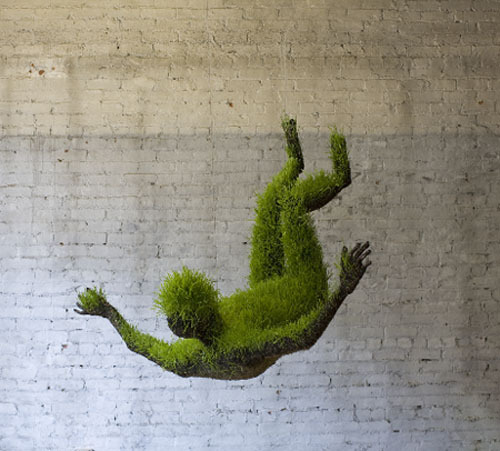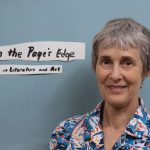Con Edison Immigrant Artist Program Newsletter, Issue No. 17
Featured Artist: Mathilde Roussel Giraudy
This month, our IAP Intern Flavia Berindogue, a Brazilian artist and designer, interviews Mathilde Roussel Giraudy, a French artist based in New York.
IAP: You are an artist who has worked with different media, but in most of your work, vestiges of your childhood in France are always a constant. Do you think your distance from your home country brought to you the reminiscence of traditions and moments from your past life? Sometimes we understand places more clearly when we move away from them.
MRG: Being away from my country inevitably made me wander in the memories of my past in France. I find inexhaustible inspiration in my childhood, it brings back to life elements that define my identity. My work drawn from my memories is also tightly woven to my present life in NY. In my dreams, I travel back to France and it allows me to explore my memories and past emotions in a very abstract and symbolic way. I think about jumping in the giant pile of wheat seeds as if they were oceans. I recall breathing the perfume of the fresh washed sheets, billowing in the wind. But there are holes in my memories. I try to catch these thoughts of the past and, as a reminder, I make artwork intended to awaken some personal emotions in other people’s minds. Sculpture helps me to recreate the past in a metaphorical way. I seek to translate the experience of being away from home through the psychological impact it has on the body, the objects, and their absence.
IAP: In the urban frenzy of contemporary life, we are often so hurried that we lack a consciousness in what we do, what we consume. You grew up in a farmhouse in France, where natural foods and resources were part of your everyday life. How is your work and your life in New York City now informed by this upbringing? Perhaps we can discuss your work ça pousse! (it’s growing!), in which the body is used as a reference between man and nature, to reflect on this.
MRG: Growing up on a farm in France made me conscious of the importance of our relation to the land. Being aware of the provenance of food was evident. The natural world, ingested as food becomes a component of the human being. Living in a city like New York makes things more difficult. People don’t pay attention to what they eat because there is an effort to make. But there are more and more solutions against this problem. A lot of people are now growing their own food, participating in food coops, and buying at the farmers markets. Through ça pousse! anthropomorphic and organic sculptures made of soil and wheat grass seeds, I strive to show that food, it’s origin, it’s transport, has an impact on us beyond its taste. The power inside it affects every organ of our body. Observing nature and being aware of what and how we eat makes us more sensitive to food cycles in the world – of abundance, of famine – and allows us to be physically, intellectually and spiritually connected to a global reality.
IAP: In your works, the body seems to be used as support for your memories. Is the body used as a form to confess, to demonstrate your past experiences?
MRG: The body is very important to my work. It is a language, every part of it reveals thoughts and feelings. It can be fragmented, metamorphosed. The mental is never independant from the body. Our body carries all the invisible marks of our past experiences. It reveals the most universal of human existence. I try to express what resides inside the body rather than outside.
IAP: Embroidery is a beautiful old French tradition. Floating Memory is a work where you used hand stitching sewn by your grandmother. I believe it brings to the spectator reminiscences of their own memories. We all have some object that bespeaks of the past, but maybe we don’t give a real value to it until it is exposed to our eyes, or until some story is told about it. Could you talk about this work?
MRG: My grandmother always had a fabric embroidered handkerchief with her. She kept it in her sleeve or under her pillow at night. In her generation, it was part of women’s dowery thus a mark of their identity. She gave me a few I kept as a precious heritage from her. After she passed away, I stitched together the 40 handkerchiefs I had inherited and made it float in the air in homage to her. It creates a map of her life. Natural holes in the fabric from the wear of time serve as metaphors for memory and the little scars accumulated over a lifetime.

Visit Mathilde Roussel Giraudy’s website.





